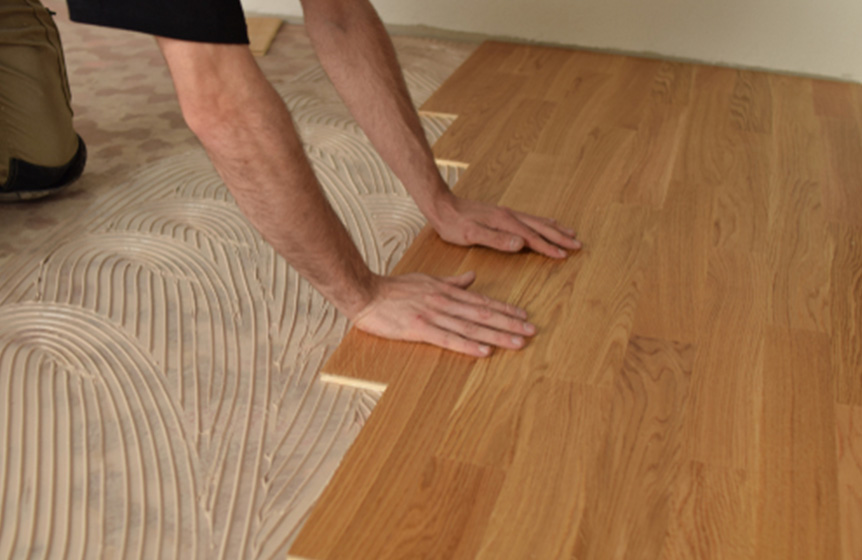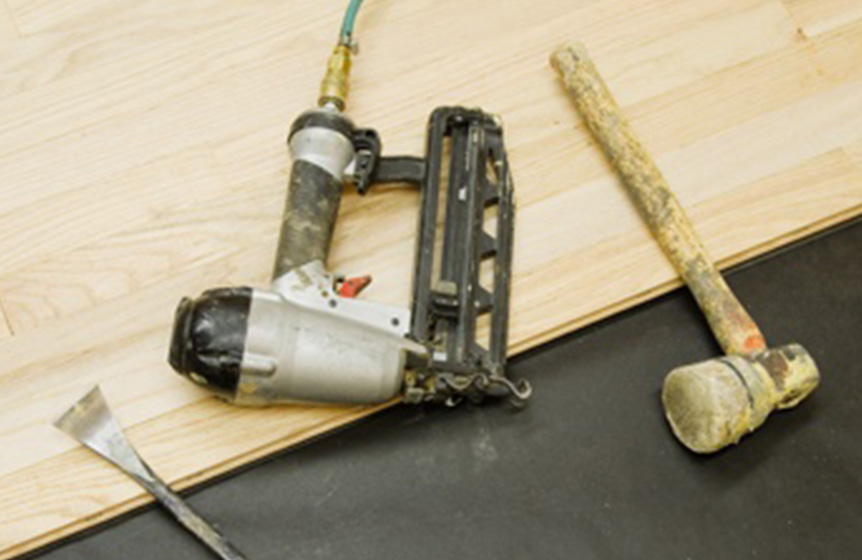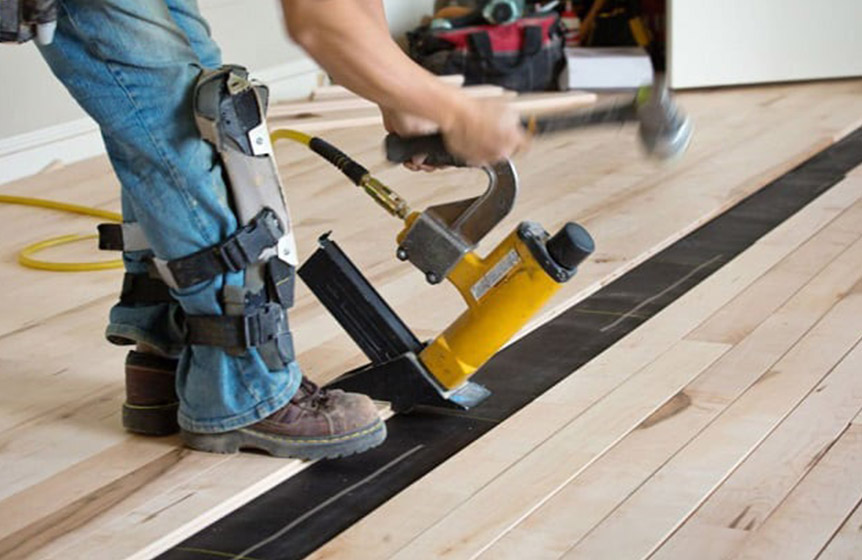Engineered wood flooring combines elegance, durability, and versatility, making it a favored option among homeowners and designers. Beyond selecting the perfect wood species and finish, deciding on the installation method is crucial for ensuring both aesthetic appeal and long-term performance.
Among the various installation options available, four methods stand out: Floating, Glue-down, Nail-down, and Staple-down. Every method carries its unique benefits and factors to consider.
| Installation Method | Floating | Glue-down | Nail-down | Staple-down |
| Difficulty | Easy | Moderate | Moderate | Moderate |
| DIY Friendly | Yes | Possible, but challenging | Possible, but labor-intensive | Possible, but labor-intensive |
| Stability | Moderate | High | High | High |
| Sound Insulation | Fair | Good | Fair to Good | Fair to Good |
| Suitable Subfloors | Concrete, Plywood, Existing Flooring | Concrete, Plywood | Plywood, OSB | Plywood, OSB |
| Moisture Resistance | Limited | Yes (with proper adhesive) | Limited | Limited |
| Replacement Ease | Moderate | Difficult | Easy | Easy |
| Professional Installation | Optional | Recommended | Recommended | Recommended |
Table of Contents
ToggleFloating Installation:
Floating engineered wood flooring installation involves the planks being attached to each other rather than to the subfloor. Typically, a thin foam underlayment is placed over the subfloor to cushion the flooring and reduce noise. The planks are then clicked or glued together, forming a single, unified surface that “floats” above the subfloor.

Advantages:
- Easy and quick installation, making it a DIY-friendly option.
- Suitable for a variety of subfloor materials, including concrete, plywood, or existing flooring.
- It’s compatible with installation over radiant heating systems.
- Allows for minor expansion and contraction of the wood, minimizing the risk of warping or buckling.
Considerations:
- Offers a reduced lifespan compared to alternative methods.
- Inappropriate for spaces prone to excessive moisture, such as bathrooms or basements.
- May lack the solidity and sound insulation of other installation methods.
Glue-down Installation:
In glue-down installation, every plank is firmly attached to the subfloor using a specialized adhesive. This technique fosters a robust connection between the wood and the subfloor, ensuring a steadfast and stable flooring surface.

Advantages:
- Provides excellent stability and durability.
- Reduces noise transmission, making it ideal for multi-story buildings or high-traffic areas.
- Ideal for installing over either concrete or plywood subfloors.
- With the appropriate adhesive and moisture barriers, it can be utilized in moisture-prone areas.
Considerations:
- Requires careful surface preparation to ensure a smooth and even subfloor.
- The installation process may require significant labor and time investment.
- Removing or replacing individual planks once they are glued down can pose a challenge.
- Certain adhesives may emit volatile organic compounds (VOCs) during installation.
Nail-down Installation:
In the nail-down installation, engineered wood planks are fastened to the subfloor using nails or cleats. Typically, the planks are nailed at an angle through the tongue into the subfloor, ensuring a tight and secure fit.

Advantages:
- Provides exceptional stability and longevity.
- Suitable for solid subfloors such as plywood or oriented strand board (OSB).
- Offers a traditional and authentic hardwood flooring look.
- Facilitates simple replacement of damaged planks in the future.
Considerations:
- Installation may generate noise and vibration, especially in multi-story buildings.
- Not compatible with concrete subfloors without additional preparation or subflooring.
- For the best outcome, professional installation may be required.
Staple-down Installation:
Similar to nail-down installation, staple-down involves securing the planks to the subfloor using staples instead of nails or cleats. This method offers many of the same benefits as nail-down installation but utilizes staples for a quicker and more economical process.

Advantages:
- Provides strong and secure attachment to the subfloor.
- Faster and more cost-effective than nail-down installation.
- Suitable for plywood or oriented strand board (OSB) subfloors.
- Enables straightforward replacement of individual planks as necessary.
Considerations:
- Requires access to the subfloor for stapling.
- Staples may cause squeaking if not properly driven or seated.
- For the best outcome, professional installation might be necessary.
- Limited compatibility with concrete subfloors without additional preparation.
Conclusion:
Selecting the appropriate installation method for your engineered wood flooring is crucial to attaining both aesthetic allure and long-term durability, especially when sourcing from a reputable engineered wood flooring manufacturer. Whether you choose a floating, glue-down, nail-down, or staple-down installation, each method presents distinct advantages and considerations. By carefully evaluating your project requirements, subfloor conditions, and personal preferences in consultation with your chosen engineered wood flooring manufacturers, you can select the perfect installation method to bring your vision to life and enjoy beautiful, durable flooring for years to come.
